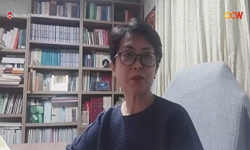각 문화의 의료현장은 흥미로운 인류학적, 철학적 고찰의 장이다. 의료현장 행위자들의 상호작용 속에 그 문화가 담지하고 있는 세계에 대한 인식이 드러나기 때문이다. 서양의학의 현장은 ...
http://chineseinput.net/에서 pinyin(병음)방식으로 중국어를 변환할 수 있습니다.
변환된 중국어를 복사하여 사용하시면 됩니다.
- 中文 을 입력하시려면 zhongwen을 입력하시고 space를누르시면됩니다.
- 北京 을 입력하시려면 beijing을 입력하시고 space를 누르시면 됩니다.

한의학 병명의 현상학 = Phenomenology of Disease Names in Korean Medicine : An Anthropological and Phenomenological Approach
한글로보기https://www.riss.kr/link?id=A101718969
- 저자
- 발행기관
- 학술지명
- 권호사항
-
발행연도
2015
-
작성언어
Korean
- 주제어
-
등재정보
KCI등재
-
자료형태
학술저널
-
수록면
107-132(26쪽)
- 제공처
- 소장기관
-
0
상세조회 -
0
다운로드
부가정보
국문 초록 (Abstract)
각 문화의 의료현장은 흥미로운 인류학적, 철학적 고찰의 장이다. 의료현장 행위자들의 상호작용 속에 그 문화가 담지하고 있는 세계에 대한 인식이 드러나기 때문이다. 서양의학의 현장은 서구문화에서 배태된, 주체가 세계를 이해하고 문제를 파악하고 해결점을 찾는 방식을 예시한다. 한의학 현장은 동아시아문화 속, 주체가 세계를 경험하고자 했던 방식이 내재해 있다. 본 논문은 인류학적 방법론과 현상학적(특히, 메를로-퐁티의) 논의를 통해 주체, 경험, 이름이라는 주제를 중심으로 한의학 병명을 고찰해 보았다. 서양의학 병명과 한의학 병명을 비교 고찰하면서 두 의학의 인식론적 분지를 통해, 한의학 병명에 내재해 있는 현상학적 인식을 드러내 보이고자 하였다. “지각된 대상”을 강조하는 서양의학은 질병 현상에 대한 고정과 대상화를 통해 진단하고 치료한다. “지각의 경험”을 강조하는 한의학은 주체와 타자 사이의 현상의 현현을 짚어가면서 진단하고 치료한다. 한의학 병명의 느슨함은 의료적 현상의 장에서의 다양한 경험의 가능성을 열어두기 위함이다. 주체와 타자 사이 주도하는 자가 분명하지 않은 한의학적 인식의 특징은 한의학 병명이 증가하지 않는 결과를 낳는다. 본 논문의 학제간 논의가 인류학과 현상학, 그리고 한의학과 현상학의 대화를 증진 하는데 일조하기를 고대한다.
다국어 초록 (Multilingual Abstract)
Medical Settings in each culture provides an interesting site for anthropological and philosophical exploration. That is because actors’ interaction at medical settings reveals the culture’s way of perception toward world. Combining anthropologica...
Medical Settings in each culture provides an interesting site for anthropological and philosophical exploration. That is because actors’ interaction at medical settings reveals the culture’s way of perception toward world. Combining anthropological methods and phenomenological discussion, this paper examines disease names in Korean medicine with the themes of subject, experience, and name. It juxtaposes disease names between Western medicine and Korean medicine, attempting, with the divergent perceptions between the two medicines, to illuminate phenomenological perceptions internalized in Korean medical disease names. While Western medicine emphasizes “the objects perceived” and diagnoses and treats through fixity and objectification of illness phenomena, Korean medicine attends to “the experience of perception” and diagnoses and treats taking care of the layers of phenomena. The elusiveness of Korean medical disease names enables the potential of diverse experiences at medical-phenomenal field. The non-fixed dominance between subject and others in Korean medical perception results in not-increasing number of disease names. This study’s interdisciplinary attempt, we hope, can contribute to the dialogues between phenomenology and anthropology and phenomenology and Korean medicine.
목차 (Table of Contents)
- 【요약문】
- 1. 들어가며
- 2. 철학과 인류학, 현상학과 인류학
- 3. 병명에 대한 인류학적/철학적 접근
- 4. 나오며
- 【요약문】
- 1. 들어가며
- 2. 철학과 인류학, 현상학과 인류학
- 3. 병명에 대한 인류학적/철학적 접근
- 4. 나오며
- 참고문헌
- 〈Abstract〉
동일학술지(권/호) 다른 논문
-
- 한국현상학회
- 홍성하(Seongha Hong)
- 2015
- KCI등재
-
- 한국현상학회
- 한정선(Jung-Sun Han)
- 2015
- KCI등재
-
- 한국현상학회
- 오흥명(Heung Myung Oh)
- 2015
- KCI등재




 DBpia
DBpia







